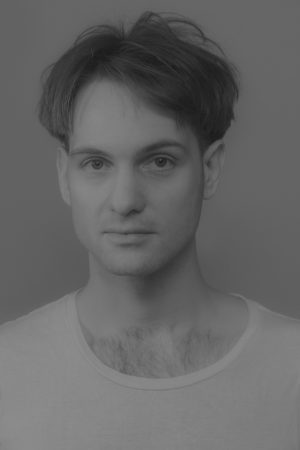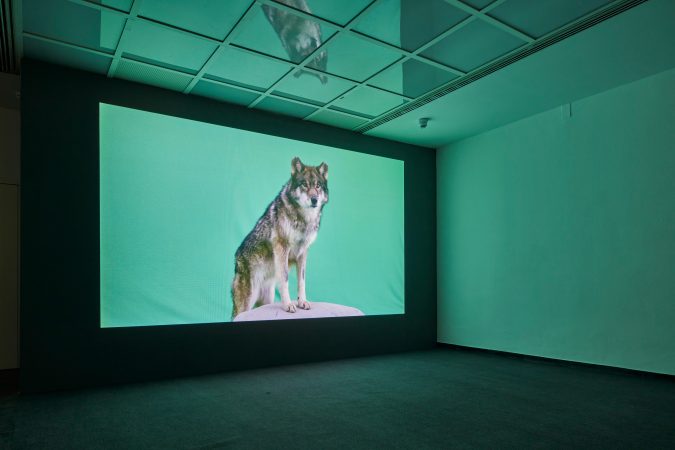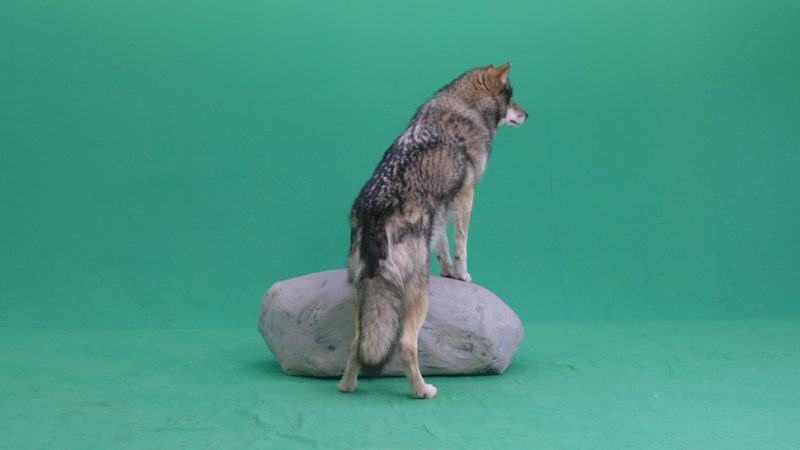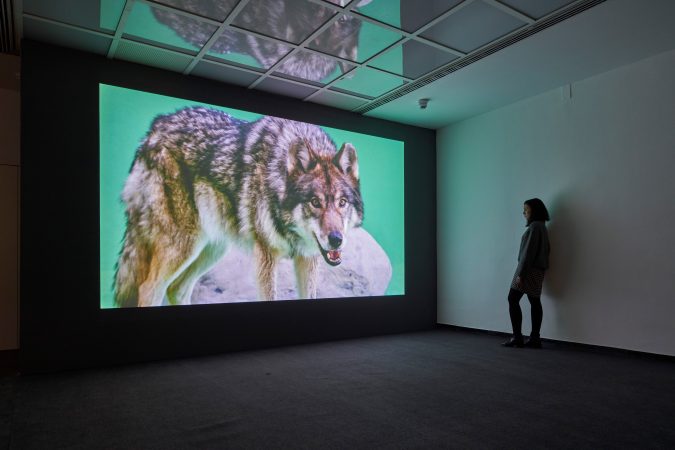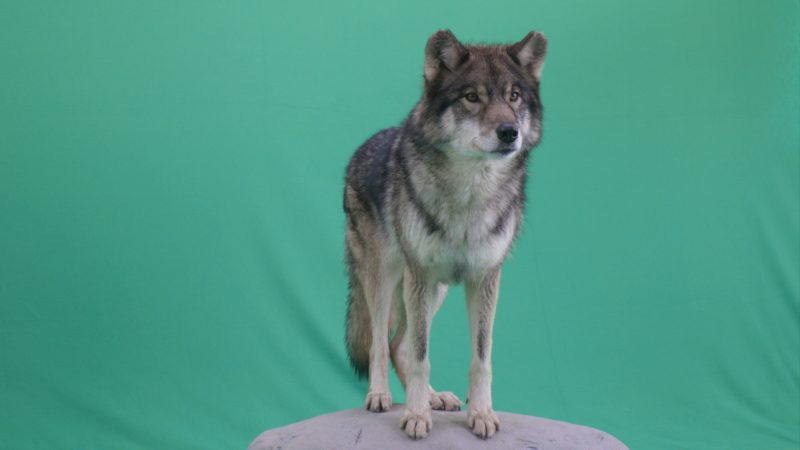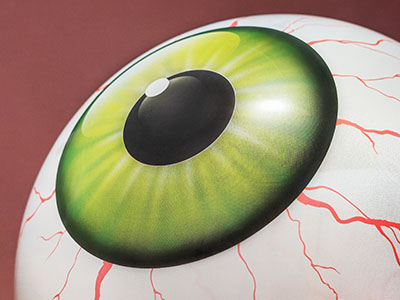Jonas Brinker
In his newly developed work for the Frankfurter Kunstverein, Jonas Brinker follows a domesticated wolf who lives in a private household in Lower Saxony. Along with other wolves, he is trained to work in films—to react to simple commands, to stand still, and to pose. Jonas Brinker observes the behavior of domesticated creatures in this artificial setting and chronicles how the natural and the staged are mutually dependent.
The starting point of the work is thus a creature that has always emerged as an ambivalent symbol for humans across all cultures. Fears were projected onto it like no other animal; it has become the symbol of the untamable and the savage. The wolf appears in countless ancient mythologies, for example as an animal god around the Egyptian god Osiris, the Greek god Apollo, or the Roman god Mars; in China as a guardian of the heavenly palace; and in India as a companion of terrible deities. The founding myth of Rome highlights the maternal side of the wolf that nurses—and thus saves—Romulus and Remus. Native Americans viewed the wolf as the brother of man. In the so-called Third Reich, the wolf became an animal symbol of strength and aggression. In modern literature, the wolf has lost its purely negative connotations and has become a symbol for a human inner wolf-like side, as in Hesse’s Steppenwolf, for example. In the analytical psychology of C.G. Jung, the wolf woman emerges as a symbol of the power of female primal instinct.
In the past few years in particular, the return of the animal to German forests has been associated with fearful scenarios, repeatedly invoking certain metaphors and tropes. For many, the wolf is a symbol of a creature that is threatening and wild, but also clever and free. These stereotypes are imposed on the animal, above all, by a certain visual vocabulary that frames the wolf as this exact metaphor in documentaries and films.
Jonas Brinker’s video work builds on these connotations and shows the moment in which the animal becomes an image. In front of a green screen, the wolf does its circuits and repeatedly stands on an artificial stone to look into the distance. The animal was trained to behave in conditioned motion sequences according to human commands. But the animal’s gaze and posture allow the controversial tension one can sense within the creature to show through.
The green screen and artificial stone, which make up the landscape that it now inhabits, are a factory for images that produce the same metaphors over and over again. Jonas Brinker’s film chronicles the moment before the cultural product and looks for the wolf’s actual existence. The camera gazes at the animal and records how this gaze is reciprocated.
(Text: Franziska Nori, Dennis Brzek)

